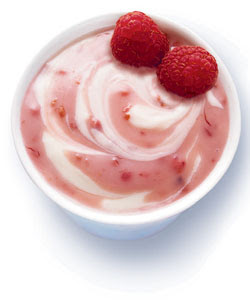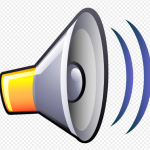As I’ve talked about many times before, we are the unfortunate victims of a society that does everything possible to ‘help’ us get fat. Portion sizes are 2-5 times what they were 3 decades ago, teaching us to eat larger portions at meal times. Fast food restaurants infect nearly every street corner; though many do carry healthier options, it is still all too easy to belly up to a double cheeseburger and fries. Convenience stores packed to the rafters with King Sized chocolate bars are even easier to find when hunger hits.
We can also easily find ourselves living a full day, barely moving at all. We can shop for most things while actively ‘surfing’ from an armchair at home, computer in our laps. Many buildings (including my own) are built with stairs that you can only access to go down in case of emergency, with the elevator being the only option to go up. Communities have been built with sidewalks on only one side of the street, or in some places, no sidewalk at all!
When we try to circumvent these obstacles to live a healthy, active life, and make healthy food choices, it seems that the cards are stacked even higher against us, because food labels are often very misleading! For example:
1. ‘Sugar Free’ does not necessarily mean ‘calorie controlled’. You may notice in some ‘sugar free’ food labels, that it may say in very tiny letters ‘not a calorie reduced food’ – this is a good hint that the product is laden with tasty fat in order to compensate for the lack of sugar. Other times, the label doesn’t provide this warning.
Sugar Free chocolate is a classic example:
- Reese’s Mini Peanut Butter Cups (5 mini cups): 180 cal
- Reese’s Sugar Free Mini Peanut Butter Cups (5 mini cups): 160 cal
So, the sugar free version are only 11% lower in calories than the regular variety!
Having said that, I do want to point out that the sugar free variety are a better choice for diabetics, as they will cause less of an increase in blood sugar than the regular sugar choice. Other than that, the good thing about these peanut butter cups (sugar free or not) is that they are portion controlled – if you eat one or two, rather than eating the company recommended ‘serving’ size of 1 bag, which contains over 200 calories.
2. ‘Fat Free’ does not necessarily mean that a particular food is the lowest choice, either. For example:
- Activia Fat Free vanilla yogurt has 72 cal per 100 g
- Yoplait Source Fat Free has only 35 cal per 100 g
The difference? Activia is sweetened largely with sugar; Yoplait is sweetened with artificial sweetener.
So what is the solution? Check the calorie count!! Be careful to check nutritional labels and take a moment to do the math. You can calculate your daily caloric needs in the right hand column of www.drsue.ca – then take a moment to contemplate what you are about to eat, and how it counts in to your daily totals. With a little forethought, the cards that sometimes seem stacked against us can be overcome!!
If you have any tips for amazing foods that you have found that are tasty and calorie-wise, OR, foods that are advertised as healthy on the label but are laden with calories, please email your thoughts to me at drsuetalks@gmail.com !
Dr. Sue © 2010 www.drsue.ca drsuetalks@gmail.com












